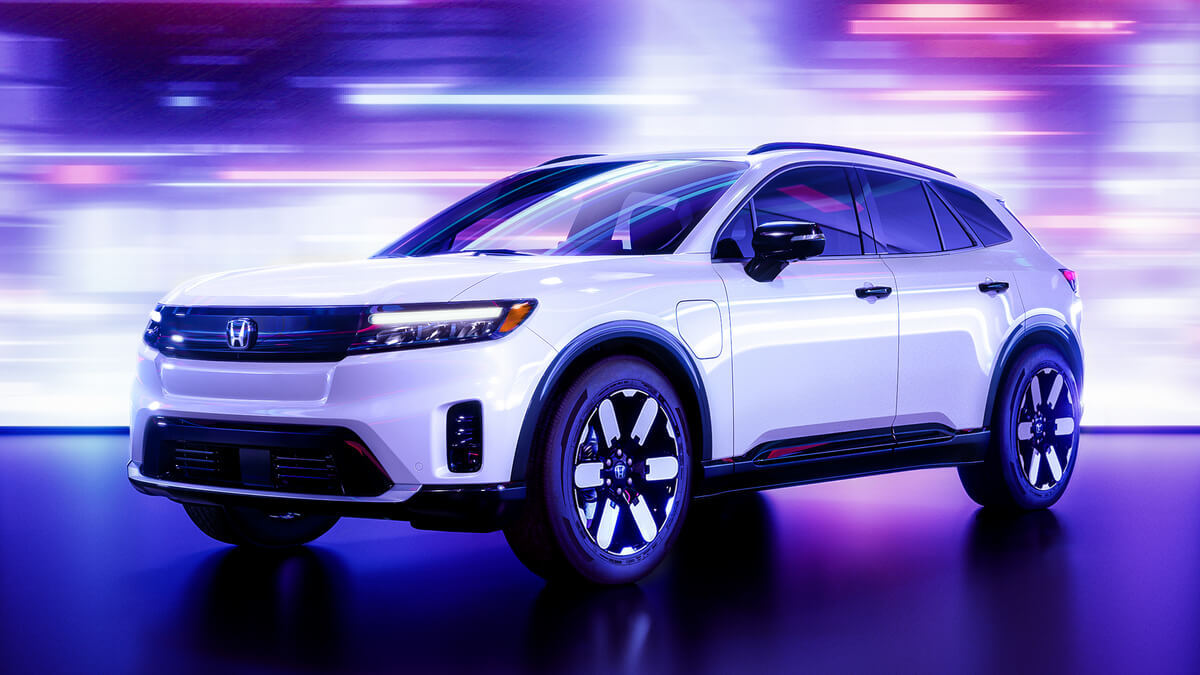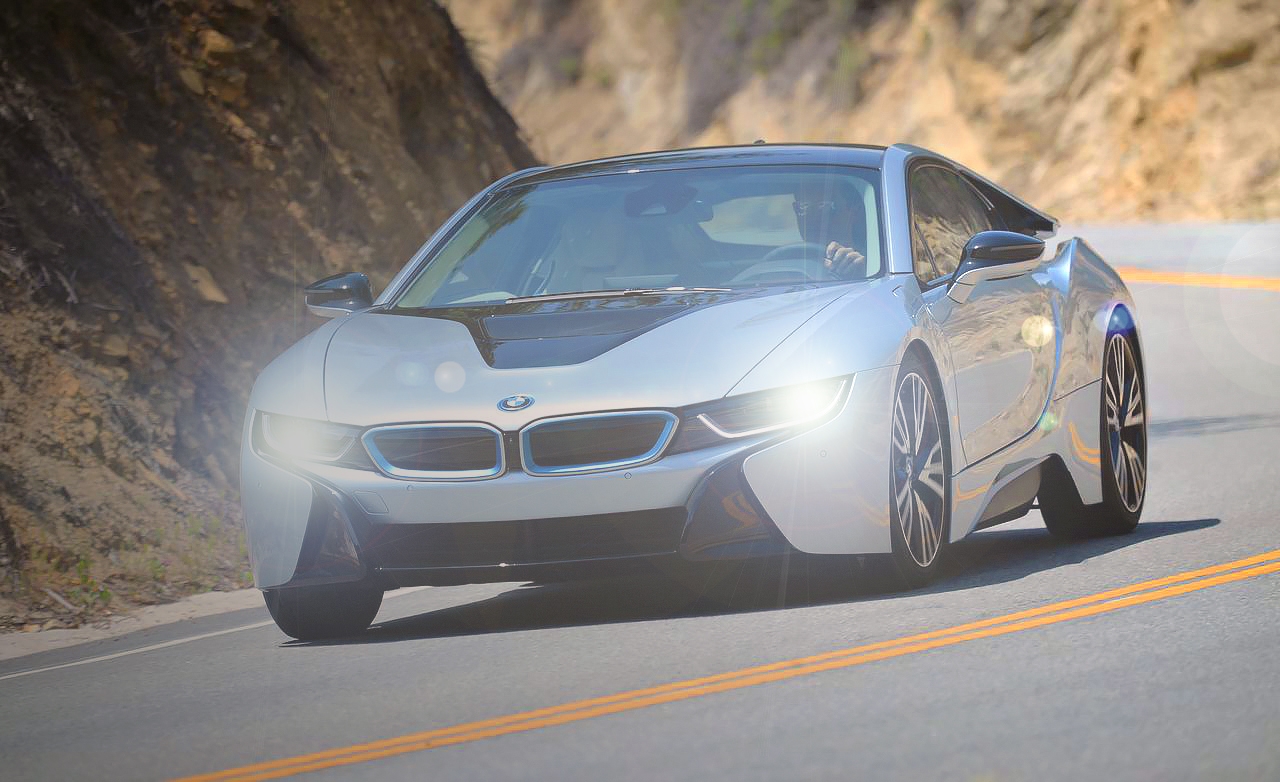
Future perfect BMW i8. It’s not often that you come across a vehicle that you could describe as a genuine landmark car but Kyle Fortune reckons that BMW’s i8 eco-supercar is just that. Landing at LAX and shuffled into an BMW i3 for a ride downtown it already feels like the future has arrived. Having sat in a dark 747’s cabin surrounded by the white noise of jet engines the i3’s silence and light is rejuvenating, BMW’s compact eco machine slipping through the chaotic Los Angeles traffic with real stealth. The BMW i3’s just the support act, though, as tomorrow the BMW i8 will be heading out onto Los Angeles’s streets, and I’ll admit I’m more than a little bit excited.
Unprofessional to say so, perhaps, but since seeing the i8 on a show stand at Frankfurt in 2009 I’ve been intrigued by it, and not just because of its overt, future-looking styling. The idea of mixing two such diametrically opposed elements as ultimate fuel economy and high performance in a single vehicle is one that fascinates, and leaves me asking who exactly it’s for? Sports cars by definition are selfish, indulgent choices but the i8 promises to completely turn that idea on its head with the ability to offer a quite incredible 134.5mpg official combined consumption figure, along with CO2 emissions of 49g/km. Yet the numbers also make interesting reading regarding performance, its combined 362hp and 420lb ft torque output, combined with a 1485kg kerb weight and four- wheel drive allowing it to reach 62mph in 4.4 seconds on its way to a 155mph top speed.
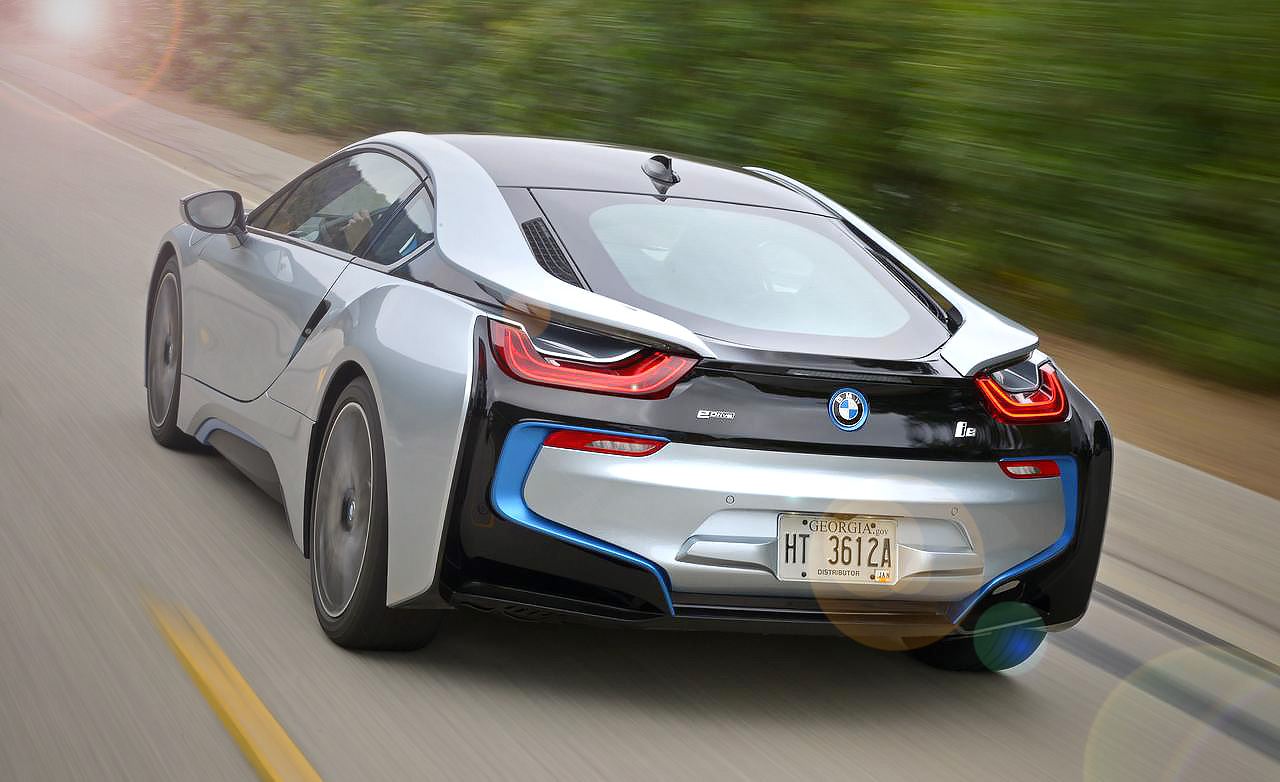
The drivetrain itself is worthy of an entire magazine, but to summarise it consists of a front- mounted electric motor driving the front wheels and a 1.5-litre TwinPower Turbo petrol unit in the rear powering the rear wheels. That electric motor up front delivers 131hp and 184lb ft of torque and the petrol turbocharged unit offers 231 hp and 235lb ft.
Added to that is a starter/generator working on the rear petrol turbocharged unit, which does as it suggests – starting the engine and generating charge when possible for the lithium-ion battery pack. Dr Carsten Breitfield, head of the BMW i8 vehicle project, also admits that the additional motor is used to speed up the reaction of the petrol unit to allow it to react as quickly as the front electric one, delivering as much as 92lb ft of torque into the TwinPower Turbo’s crank to effectively torque fill to account for any turbo lag.
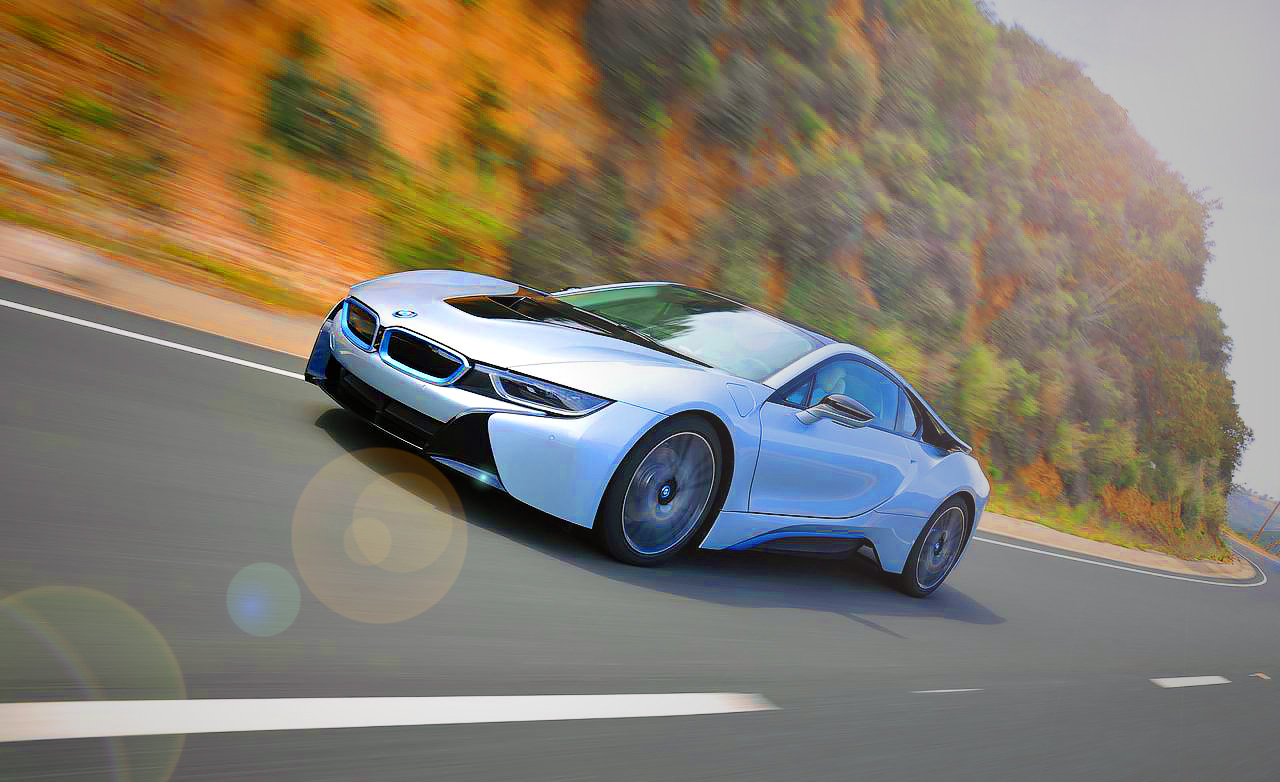
As if three power sources isn’t complicated enough to juggle, the i8 features a pair of gearboxes. There’s a conventional six-speed automatic working on the rear axle, while a two-speed gearbox is used with the electric motor, using its first gear when running in electric-only mode, pushing into second when both the petrol and electric motors are working together in hybrid mode. It’s fiendishly complex and potentially very heavy. However, the use of carbon fibre reinforced polymer (CFRP) in the i8’s structure and bodywork and other lightweight materials throughout means that the i8’s kerb weight is just 1485kg.
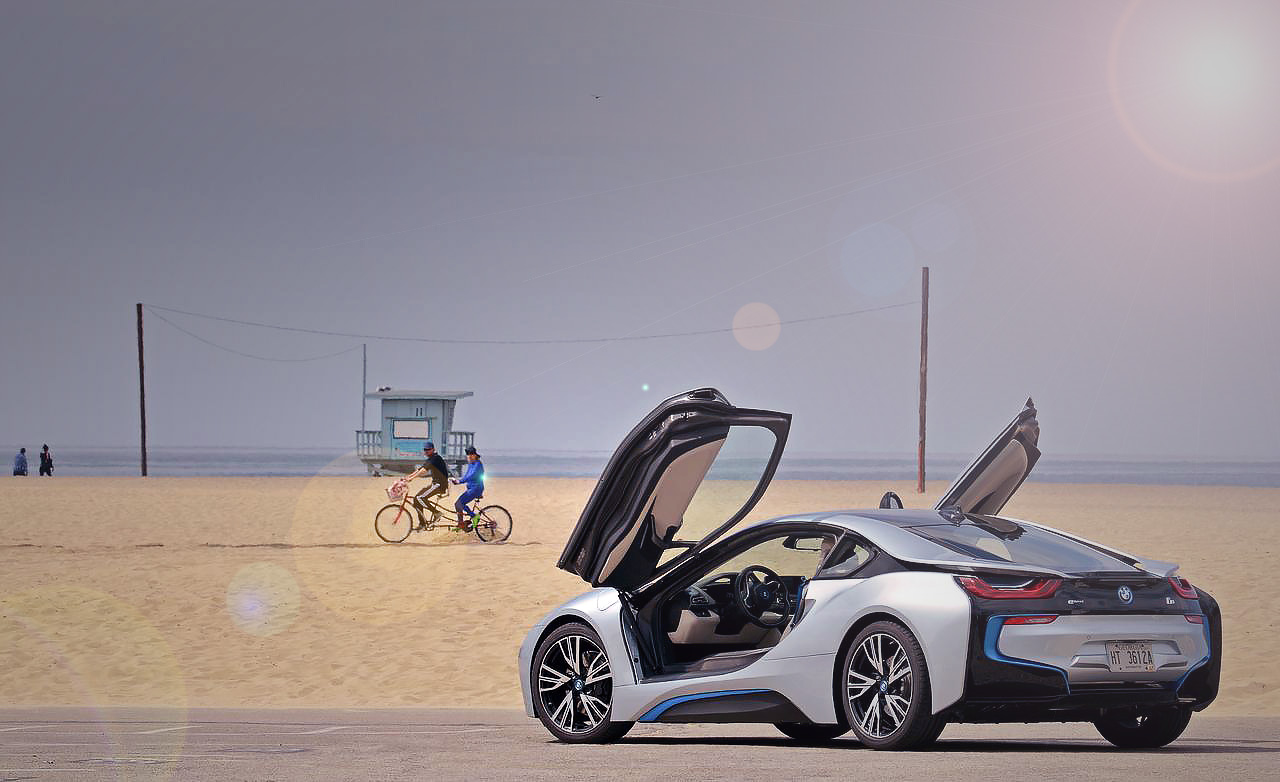
If its drivetrain is future-looking then its bodywork underlines that. Never has a car caused so much positive reaction on the road. BMW has remained largely faithful to the original concept car’s looks and the effect is nothing short of sensational. Even in LA, where the outlandish, exotic, rare and unique make up a good portion of the daily trafficscape, the i8 looks like it’s arrived from another planet.
The focus of every smartphone shutter it passes, the i8 might be able to slip silently along on electric power alone, but it’s never stealthy. Cars pass, slow down then wait to be passed again for a better look. Windows are wound down and conversations struck up in traffic. The few pedestrians, runners and skateboarders that populate LA’s sidewalks momentarily stop and react with double-take disbelief as the i8 rolls by.
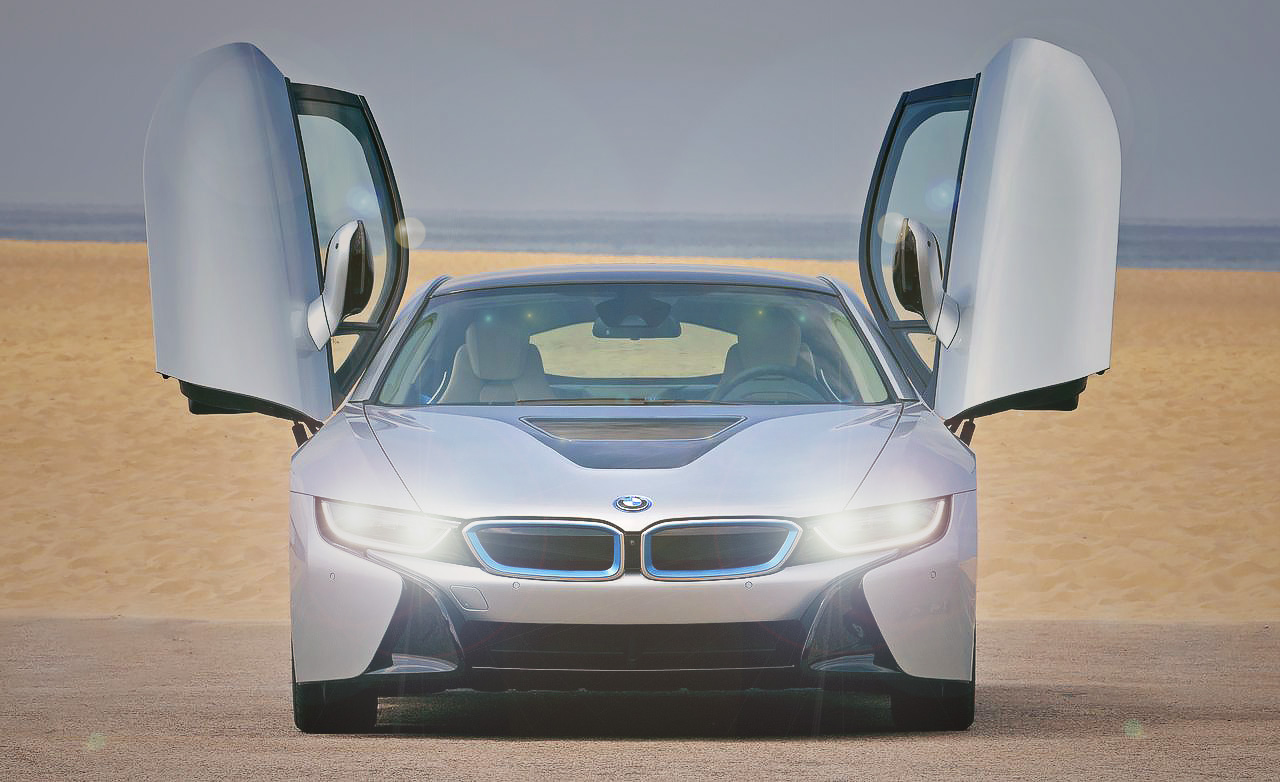
It’s a complex, functional and achingly pretty car.
Its shape might have ultimately been honed in a wind-tunnel for maximum efficiency, but BMW’s Head of Group Design, Adrian van Hooydonk admits that elements like those floating rear buttresses are pure stylistic flair. They taper into the technical topography that makes up the rear, the i8’s shape such that you really could pick any section of its bodywork and marvel at the surface detailing for hours. The interplay between the predominantly flat panels and deep scalloped intakes, vents and the use of contrasting colours and blue highlights around the grille and rear make the i8 look next century and utterly contemporary at the same time.
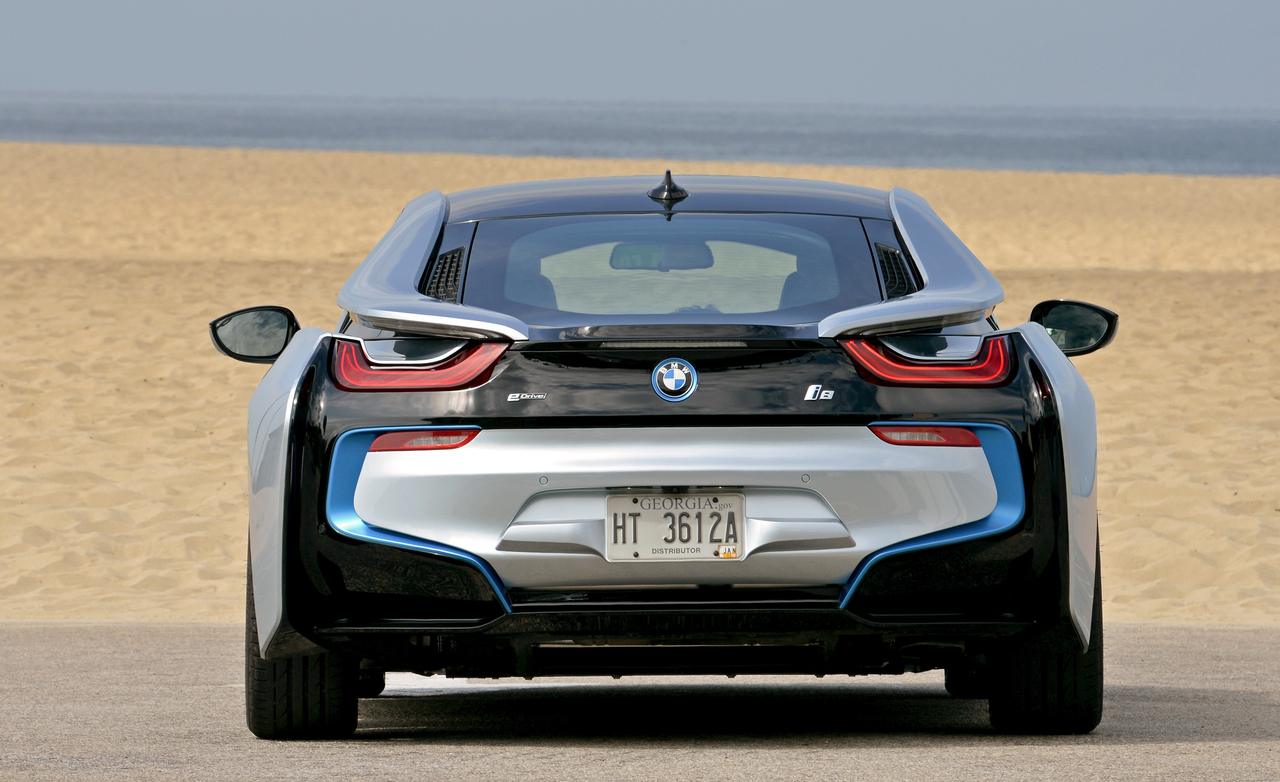
It’s impossible not to love the naked, and raw finish of the recycled carbon fibre roof panel. It’s not the polished carbon weave of an M car, instead the i8’s roof material has a more honest, basic-looking finish, applied here as much for its eco credentials as for its performance ones. That in time it’ll be offered with optional laser light headlights and carbon fibre wheels (these reducing the unsprung mass by 3kg per corner) only underlines the i8’s status as the future today.
The only way the i8 would attract more attention would be if Amy Adams were behind the wheel on her way to a shoot in Hollywood and happened to forget to get dressed. As if any additional theatre was needed to get inside you reach into the recess behind the door, pop the button and the door hinges up and forward like a butterfly’s wing. Doing so reveals not just the smart, two plus two interior – those rear seats best thought of as additional luggage space rather than useable pews – but the i8’s naked industrial-grade carbon fibre structure.

The interior takes BMW’s current design to a new level. The layered dashboard is neat and uncluttered, the driver very much the focus. The steering wheel is thick, and large, BMW resisting the temptation to lop the bottom off as is currently the trend in anything remotely sporting. The gear lever is familiar to any current BMW owner, and is mounted on the high ‘transmission tunnel’ where the i8’s lithium-ion battery pack is located. Instrumentation is via a screen with representations of instruments – what they display differing depending on the drive mode, while the central iDrive screen contains the usual BMW offerings of info/entertainment and connectivity with an additional, not particularly clear, display highlighting what the hybrid powertrain is up to.
Choosing between the i8’s drive modes couldn’t be simpler. Default mode is Comfort, this juggling the hybrid system and utilising the electric-only power as much as possible. EcoPro enhances that still, forcing more electric-only drive when possible and further minimising losses from systems like the climate control. In either, the response to the accelerator is soft, relatively speaking, there a slight hesitation as the i8 works out the best means by which to deal with your requests. That’s in keeping with its green-leaning goals though, and entirely predictable and completely effortless on the road. Switching between Comfort and EcoPro is taken care of via a toggle switch by the gearstick while eDRIVE is selected by pressing the button below the Start/Stop button.
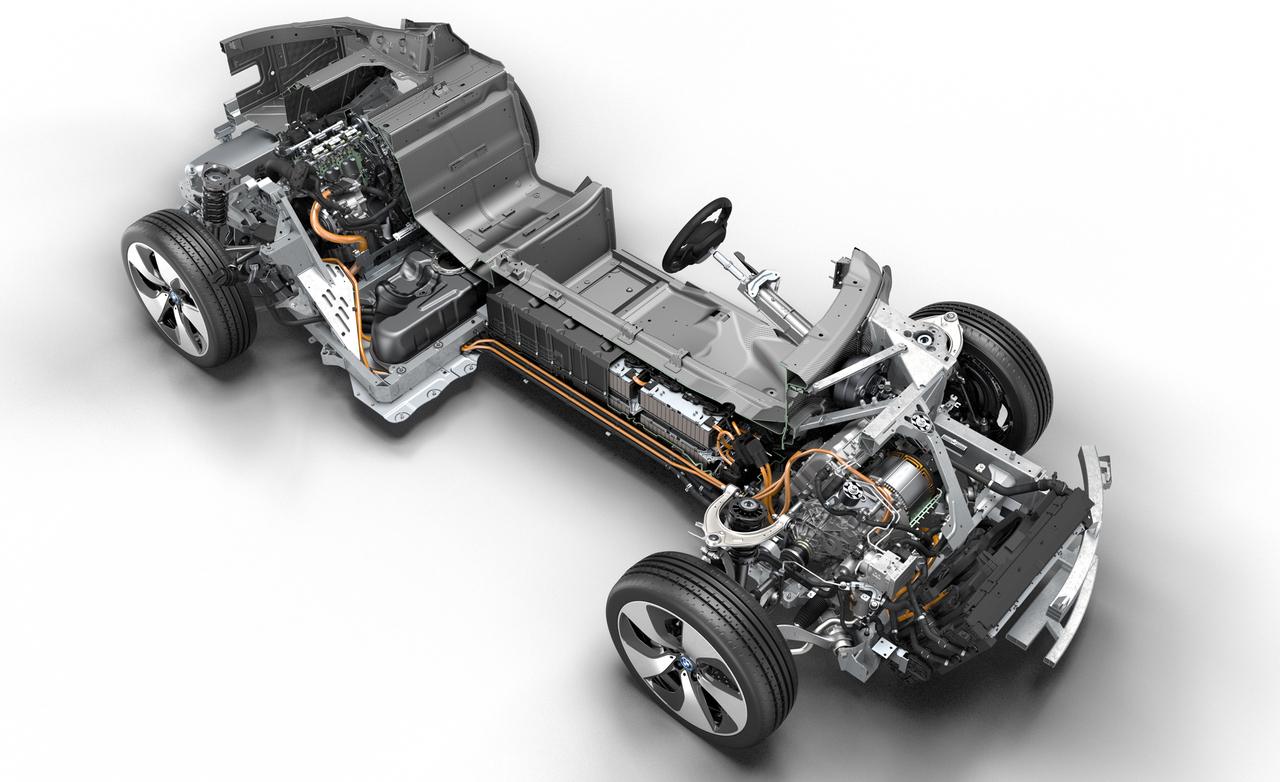
Driving the i8 on battery power alone feels like you’re cheating the system. There’s very little noise, just the background fizz and hum from the electric motor. The i8’s response is far more vivid than in hybrid mode, the electric-only acceleration feeling brisk, BMW quoting a 0-60km/h (37mph) of 4.5 seconds; more than adequate for most situations in traffic. Push the accelerator to the floor and the hybrid system will kick in but it’s rarely necessary to do so.
Cruising on Highway One on battery power alone the only way the i8 would attract more attention would be if Amy Adams were behind the wheel on her way to a shoot in Hollywood and happened to forget to get dressed. Nothing I’ve ever driven has generated such interest, not the first Audi TT, nor the new MINI though London, or Bugatti’s 1001 hp Veyron. That alone would be enough for many, that and its eco credentials, but BMW promised the i8 would offer a genuine sports car experience and Highway One isn’t the place to discover if BMW has delivered on that.
{gallery}i8{/gallery}
The roads spearing off it are, though, California’s coast eschewing the usual grid patterned roads as a result of its topography, the Tarmac following a more organic, winding route up past the gated, multi-million dollar sea-view houses. Latigo Canyon Road, rises up from Malibu, this contour-hugging, switchback ribbon of Tarmac a test for any machine that purports to be a sports car.
Flicking the gear lever over to access the i8’s Sport mode demonstrates this lightweight hybrid is not solely about the environment. The most obvious change is the dramatic shift in the engine’s timbre. Merely occasional background noise in ‘ordinary’ hybrid operation, the tiny 1.5-litre triple’s note deepens and intensifies to something sounding way more potent than any tiny, blown three-cylinder has any right to. It’s all the engine’s own sound, amplified and played though the interior speakers and a single one outside. Purists might baulk but the i8’s merely using the technology available to it and it’s arguably no less authentic than a bypass valve on a trick exhaust. It fulfils the i8’s technical, futuristic brief, too.
The performance is spot-on, the instantaneous response from the drivetrain deeply satisfying, the gearshift quick on the paddles… though it’s never entirely in your command, the auto shifting up should you hit the redline
Sport mode also changes the steering response, adding tautness to the suspension and raising the thresholds of the traction and stability systems. The screen that displays the instruments also changes to a more aggressive red setup, with the emphasis less on economy and more on performance. The stiffness of the i8’s structure was obvious on the way to Latigo but here it really gives the suspension a firm platform to work with. The control is impeccable, the i8 riding with real sophistication almost regardless of the tarmac’s texture, only the nastiest cracks in the surface being felt in the cabin. With the road following almost exactly the rolling hillside, the surface delivers tough compressions, humps and awkward cambers. The i8’s ability to shrug these off is impressive, and helped in no small measure by its low centre of gravity.
It’s fast, too; the combination of that front electric motor and rear turbo triple pursuing a common goal is achieved all but seamlessly. Only the very odd knock in the driveline points to some possible future finessing of its amalgam. With the i8 doing its sports car trick it’s difficult not to be in awe of its ability to juggle its various drive components so effectively, though. The i8’s rivals have just one engine and gearbox to deal with; this car has two main motors, a starter/generator and two gearboxes. That it feels conventional in Sport mode is testament to BMW’s development work. It’s doubly impressive when you consider it’s been achieved in under five years and from a basis of effectively zero.
That means nothing to the purists, though, and while the i8’s innovation is impeccable, it needs to stand up against scrutiny against its key rivals in the £100,000 sports car sphere. It does. No question. The performance is spot-on, the instantaneous response from the drivetrain deeply satisfying, the gearshift quick on the paddles – downshifts signalled by a glorious blipping flare of revs – though it’s never entirely in your command, the auto shifting up should you hit the redline.
You feel the stiffness of its structure through the steering, its response immediate and incisive, with good weighting and even a modicum of feel though the pleasingly chunky rim. Where the handling arguably trails against its most focused rivals is in the i8’s propensity towards understeer. It’s neutral at normal speeds but start asking more from it and the i8’s nose starts to push wide. That’s exacerbated slightly by the slight lack of response from the brakes, which take a bit of time to judge correctly. It’s all too easy to arrive at a corner carrying a bit too much speed thanks to the relatively dead feel of the brake pedal. Add stability and traction systems that are too keen to get involved and the i8’s flow is upset.
It can be driven around though, enjoyably too. Approaching corners without so much haste, using instead the driveline’s immediacy and plentiful traction to slingshot out of bends carrying speed you’d have otherwise lost on entry. Switching the traction and stability systems off helps, allowing the i8’s tail to be brought into play more readily. Not into wild oversteer but some satisfying corrective lock on exit if you get it right.
Slipping back out onto Highway One, heading back to LA the i8’s battery has gained charge – always holding onto a portion in reserve for electric-only driving when it’s needed – in the canyons. It’s difficult not to be extraordinarily impressed with what BMW has achieved with the i8. It could so easily have delivered the i8 as a eco posturing corporate statement but it’s stayed faithful to producing a superb sports car at the same time. That makes it not just a landmark BMW, but a genuine landmark car. Never has economy and performance been so effortlessly and brilliantly combined, the i8 signalling that a green future absolutely doesn’t have to be a boring, unfulfilling one.
ENGINE: BMW TwinPower Turbo: High Precision Direct Petrol Injection, Valvetronic fully variable valve control and supercharging mated to BMW eDrive technology: hybrid synchronous motor with power electronics, integrated charging module and generator mode for recuperation.
CAPACITY: 1499cc
MAX POWER: 362hp
MAX TORQUE: 420lb ft
TOP SPEED: 155mph
0-62MPH: 4.4 seconds
ECONOMY 134.5mpg/49g/km
WEIGHT: 1485kg
PRICE: £99,845
(qualifies for a £5000 OLEV discount)

